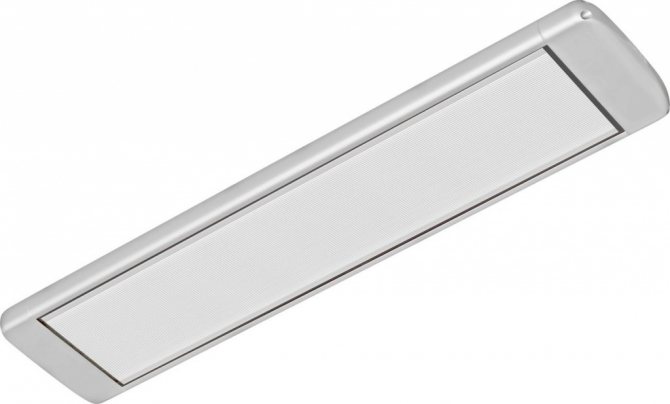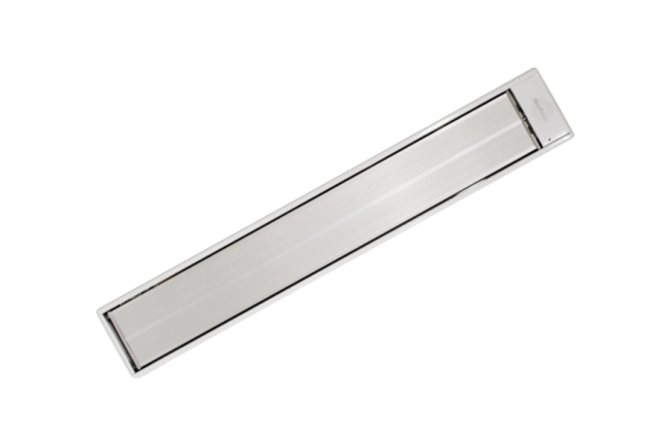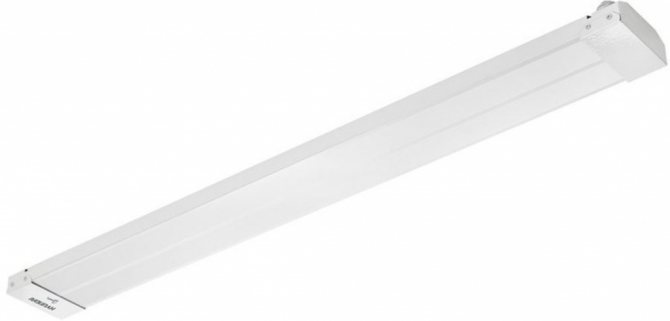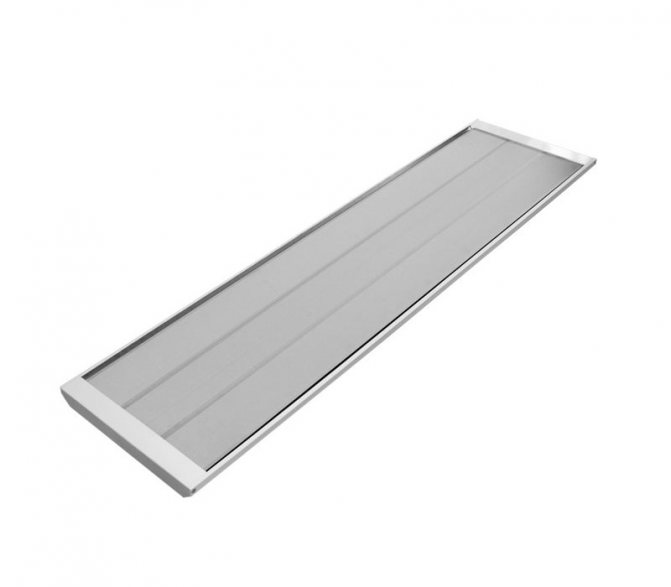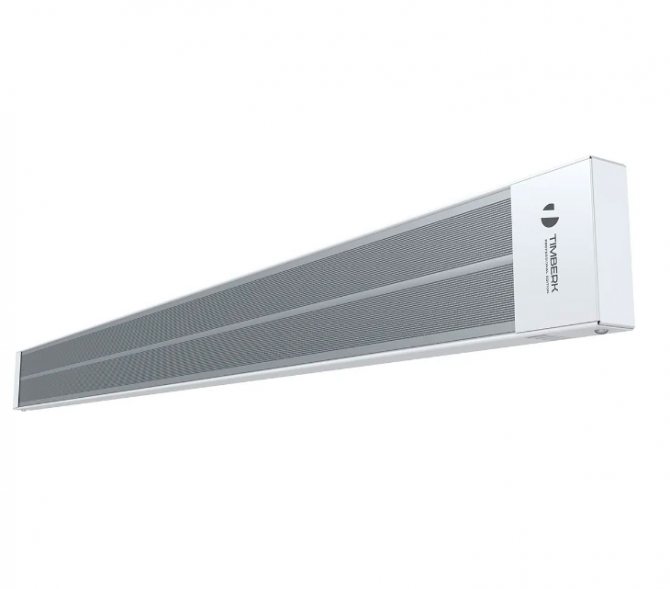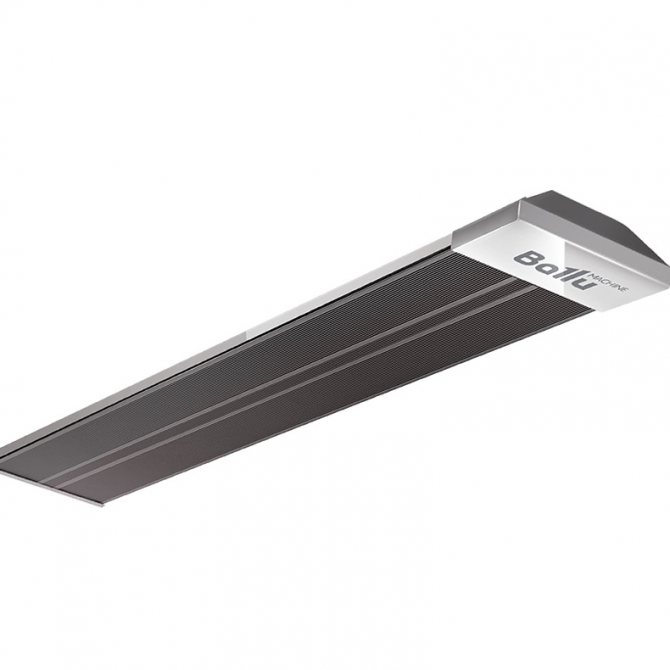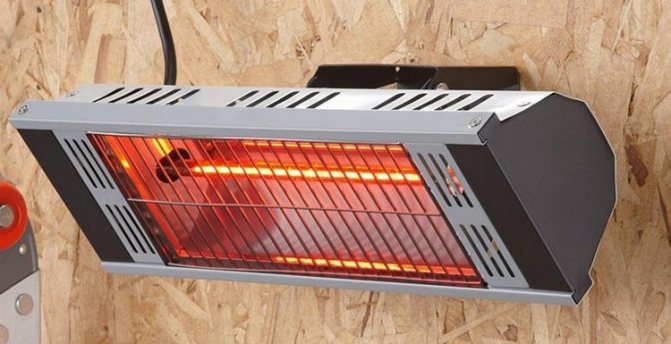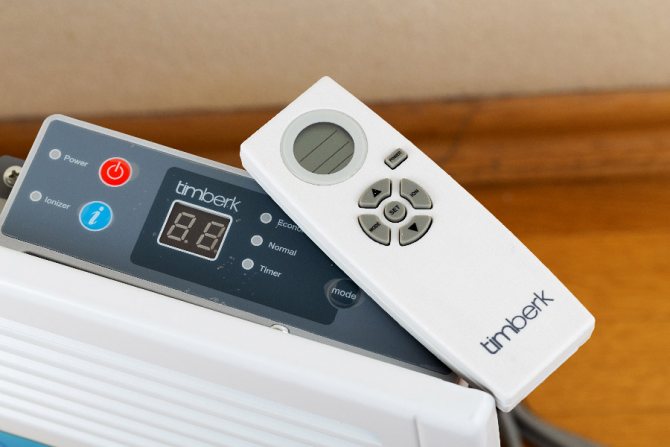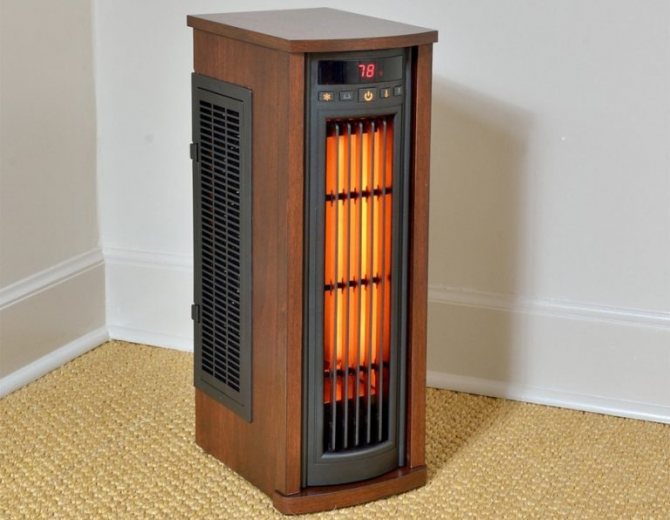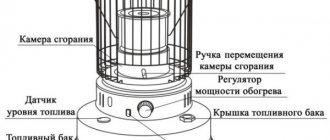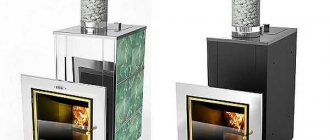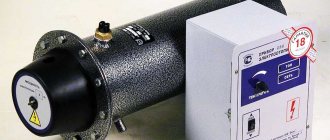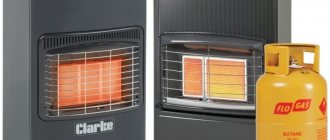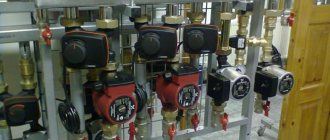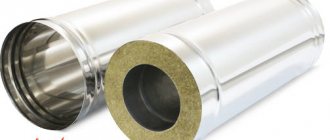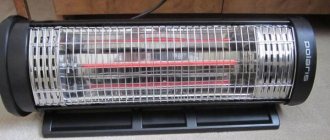What are wall mounted infrared heaters?
Infrared heaters are divided into several types, depending on the method and place of attachment.
What is it for and where is it used?

Wall heaters are heating devices that work thanks to the power supply from the mains.
They got their name as a result of the fact that they are placed directly on or in the wall, and thanks to the emitted rays they heat objects in the room.
Such a device can be used not only for additional, but also for the main heating. Do not be afraid to place several such devices in a room at once.
Their main plus is that they do not dry the air, keeping its natural humidity.
Heating occurs due to the heating of the surrounding objects. They give pleasant warmth.
Some models are equipped with a thermostat from the factory. It allows you to adjust the room temperature to the best for you. Such models are more expensive, but they work much more efficiently.
Depending on the chosen model, you can get other useful functionality. For example, a timer, an auto-off and auto-on system, and so on.
How it works: device and principle of operation
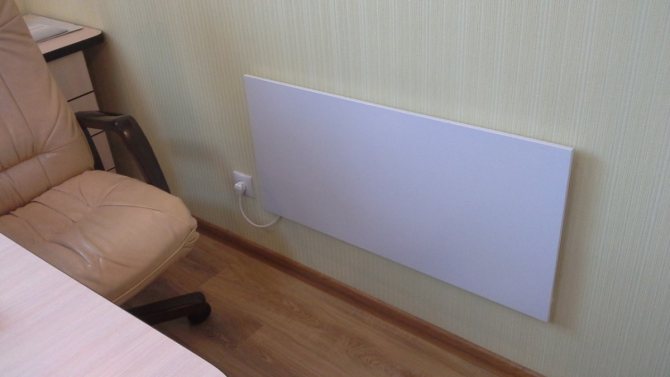

Each device, aimed at heating the room, works in a special way. Infrared heater is no exception. It consists of a ceramic panel that is heated by a special element. After the temperature reaches the required mark, the reflector starts up. Heat is reflected from the mirror surface and transferred to the room in the form of rays. The rays encounter an obstacle in the form of objects on their way. At the same time, it does not matter at all what it is: a plant, a toy, fabric, walls. Objects begin to heat up, giving off heat to the room.
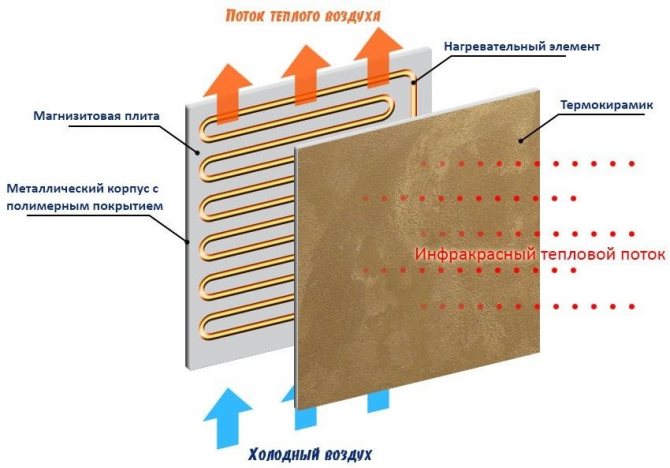

Thanks to this principle of operation, the air remains moist, households do not complain of dryness and headaches. Scientists compare the principle of operation of such devices with the action of the sun. Its rays also glide over the surface, heating only individual objects.
Best infrared heaters
Polaris PMH 2007RCD
- power 2000 W;
- floor mounting;
- micathermic heater;
- electronic control;
- weight 4.5 kg;
- the price is about $ 100.
An excellent option for floor mounting, suitable for heating a room of a decent area. The model boasts electronic controls, a remote control and a timer. The heater promises to be as safe as possible to use, as it received a shutdown function in case of overheating and overturning. The only thing users complain about is the large timer step - 30 minutes. The rest is an excellent model that fully meets expectations and copes with the tasks assigned to it.
Vitesse VS-870
- power 800 W;
- floor mounting;
- carbon heater;
- electronic control;
- weight 3.5 kg;
- the price is about $ 90.
Stylish floor heater, the feature of which is the possibility of turning the body. In addition, the manufacturer has provided the model with electronic control, a remote control, a timer, a thermostat, overheating and rollover shutdown functions. Of course, the device is worth it, but according to the set of characteristics it is one of the best infrared heaters. Please note that the power of the model is low, so it will not work for large rooms.
Rating of the best ceiling heaters
| Nomination | a place | Name of product | price |
| The best infrared ceiling heaters | 1 | Peony PRO40 | 9 850 ₽ |
| 2 | Almac IK11 | 3 790 ₽ | |
| 3 | Hyundai H-HC2-30-UI692 | 4 730 ₽ | |
| 4 | Timberk TCH A5 1500 | 3 034 ₽ | |
| 5 | Peony Thermo Glass P-10 | 7 250 ₽ | |
| 6 | Ballu BIH-AP4-1.0 | 2 928 ₽ | |
| 7 | Almac IK8 | 3 290 ₽ | |
| 8 | Timberk TCH A3 1000 | 1 790 ₽ | |
| 9 | RESANTA ICO-800 | 2 200 ₽ | |
| 10 | IkoLine IKO-08 | 3 059 ₽ |
The rating is based on the results of the analysis of goods by the service https://rankquality.com/.
Features of connecting a thermostat to a heater
We are talking about models of the remote type, which can be included in the kit or be purchased separately from the heating device. What is important in this case:
- The heater must be at least 1.5m above the floor.
- There must be a layer of insulation under the thermostat so that the readings of the device are not distorted.
- One thermostat should only be used in one room.
- The capacities of the heater itself and the thermostatic device must match each other.
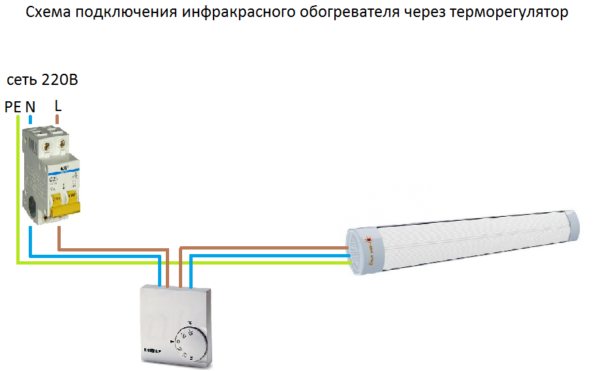

Choosing a reliable model
Naturally, when choosing the right heater, many people have a question, which brand is better? After all, clearly all have differences among themselves. At the moment, high-quality heaters are manufactured only by Russian and European companies. There are, of course, Chinese ones, yes, they are not expensive, but also not very reliable.
It is best to try to purchase heaters, especially wall-mounted, from these companies:
- Peony;
- IcoLine;
- EcoLine;
- Mister is a hit.
These types of devices will easily warm any technical room in a short time. And most importantly, you can install them yourself. They come with the brackets themselves for easy installation on a wall or other surface.
If industrial ones have a fairly high power, then household appliances have a power of only up to 2 kW. One industrial installation is enough to heat a large room, but if this is not enough, then you can safely combine several devices into one large network, in which several regulators will be present.
Here are some of the best manufacturers of automatic heating systems:
- Hyundai;
- Starprogetti.
Of course, if the room, that is, the garage, is small, then there is no point in installing an industrial-type heater in it, just ordinary, household one.
Installation rules for a wall-mounted IR heater
In order to mount a wall mounted infrared heater, it is necessary to select suitable brackets. They must be able to support the weight of the equipment and not bend under its weight. It is best to use the hardware supplied as standard. We connect the heaters to serviceable sockets with good electrical wiring. If the power of the device exceeds 3 kW, we lead a separate wire of a suitable cross-section from the meter and supplement it with an RCD machine.
When installing infrared heaters, you need to understand that they generate radiation that can cause headaches as a result of the banal overheating of tissues due to too intense heating. Therefore, the equipment should be located away from constant crowds and places to sleep (away from sofas and beds).
What are the types of IR systems?
It is possible to install an infrared heater, both gas and electricity. But in general, there are two types: industrial and household.
Industrial type heaters
The main function of this type of heater is to heat rooms with ceiling heights from 3 to 7 meters. Just such an option is perfect for garage types of premises. Car services, car washes often use such a heating system. Powered by electricity, gas, diesel.
There are several types of installation:
- Light-colored heaters. The name speaks for itself. The bulb, which becomes hot during the operation of the IR system, becomes a bright red tint. Its combustion temperature at that moment will be up to 1000 degrees.
- Dark heaters. Their operating temperature range is 300-400 degrees.Their feature is that they have a small dangerous radius of exposure to heating, so do not be afraid to put them in small rooms. Safe radiation area 2-3 meters. In addition to these advantages, for such an industrial heater, you also need to pay attention to the features of the radiation. Just for garages, wall-mounted types of heaters are excellent.
Household heaters
Household infrared heaters are also not far behind and are in great demand even for heating garages. And so, the equipment is often used for local heating. Its installation takes place above the hood of the car. The bottom line is that even if there are sharp cold snaps, the motor will not freeze due to the installed heater, so there will be no problems with performance.


Ceiling-type heaters can also be used to heat the garage. They are mounted accordingly in the upper part of the room. There is another option for installing a mobile model; it is used as a general heating system.
The principle of operation of the infrared heater
Classic heating devices heat by heating the air masses - they rise, displacing the colder air down. Approaching wall or floor heaters, they heat up and leave again. This creates a continuous cycle that gradually warms up the rooms and premises. Electric heaters (the same convectors) are heated in a similar way, spending a huge amount of energy on this.
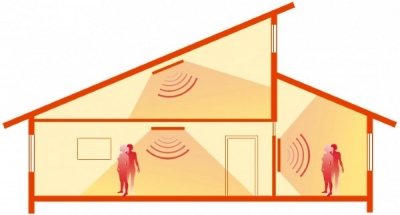

IR heaters themselves do not emit heat; they generate infrared radiation that heats up objects around.
Commercially available wall mounted infrared heaters have revolutionized the electric heating world. They have greater efficiency and are characterized by faster heating, in contrast to other units. By their principle of action, they are somewhat reminiscent of an ordinary sun. Yes, our daylight is not warming the air, but the surface of the planet, and from there the heat is transferred to the air masses.
Infrared heaters, whether floor-standing, wall-mounted or ceiling-mounted, work the same way. They are sources of infrared radiation that reaches floors, ceilings and indoor objects, causing them to heat up. The speed of propagation is instant. That is, while the convectors are puffing, trying to warm up the room, infrared heaters are already heating up the interior items with might and main, generating heat.
Some wall mounted infrared heaters use less electricity than other appliances. They also know how to heat open areas and semi-enclosed spaces.
Does the wall heater warm up the picture, what are the reviews?
First, it would be necessary to understand the properties of various types of heaters, their harm to health and the coefficient of useful power when giving off heat. Take an electric stove for example. If you turn it on in the room, it will heat the air, which will slowly but surely spread throughout the room and after a few hours it will warm it up. However, it will be relatively hot near the stove and cold far away. It heats up much more than radiators. Turn it off and it will soon get cold. She has too little heat transfer area. Moreover, it dries the air.
To solve this problem, oil heaters were invented. They have a larger volume. Some are equipped with a fan to draw air. But the principle remained the same for air heating. Another type of heater with a nichrome coil also heats the air, but some models have a reflective screen. It serves to reflect invisible light - infrared. It heats the air and reflects infrared light. Does it make sense to hang it from the ceiling? No! Its reflective properties are small, and it is necessary to warm the air on the floor so that it rises up, changing places with the lower one.
Now imagine that the entire ceiling consists of foil panels that are heated only from 30 to 60 degrees. Do they dry the air? No! Do they warm it? Hardly ever. So how will the room be warm then? Due to the fact that the ceiling has turned into a luminous surface emitting invisible light at a distance of up to three meters. If you undress, you will be warmer. and this is understandable. You are with a show-off on the beach in the sun. The layman will say: "So I have false ceilings?" So what? If the film is heated, for example, 40 degrees?
Film heaters are the only ones that can be hung from the ceiling and there will be tangible benefits from this. They practically do not heat the air, so when they are turned off, it quickly becomes cold. However, they consume half as much electricity and have heat dissipation, like a Russian stove in the entire wall. So we got to the walls. On the wall, you can hang a picture with a PLEN device (film electric heater), its price is in the region of 1000 - 1500 rubles, the power consumption is 500 watts. For comparison, an electric stove, a heater consumes twice as much, and heats up twice as bad. The temperature of the painting is from 40 to 60 degrees. No more, the film will melt. Of course, you need to respect the size relative to the wall. Such a picture is enough to heat a room of 12-15 sq. meters. Even in the nursery it is safe.
And finally the floor. "Ha! - say a thoughtful man in the street, - it's dangerous! How am I going to wash the floor if there is a 220 volt electric current? ”- and it turns out, as always, wrong. The floor panels are powered from 9 - 12 volts. Their temperature usually does not exceed 35 degrees.
Summary: There are no spirals in the films. They do not dry air, do not burn oxygen. Twice as economical and ten times more durable. The price is 15 - 30% cheaper. They don't need THAT. They are not dangerous to get burned. There are no particular difficulties for installation.
Which wall-mounted IR heater to choose
Before you start choosing electric wall-mounted infrared heaters, you need to decide on the nature of their use:
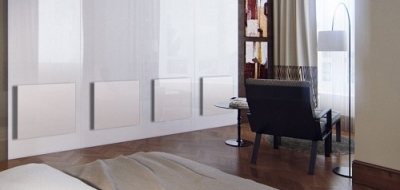

Ceramic models are perfect for creating permanent infrared heating.
- For temporary heating, film models and devices with halogen or carbon heating elements are well suited;
- Do you need constant heating? Feel free to choose micathermic models, steel or ceramics;
- Has your home been renovated? Then we recommend purchasing designer models with ceramic heaters and a glass front.
We recommend using halogen and carbon wall modifications outdoors or on the terrace.
Features of work
Among other things, such devices heat the air, which rises upward with increasing temperature. Looking through infrared heaters with a thermostat for a summer residence, reviews of which are often positive, you should take into account some feature of the operation of these devices. Users say that once you leave the heated area, you will feel the difference.
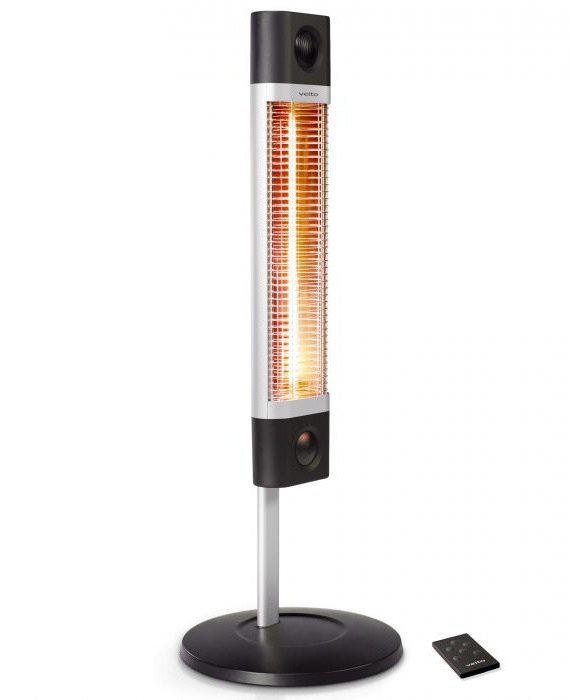

View gallery
Basic models of wall mounted infrared heaters
Wall mounted infrared heaters are represented by a whole army of all kinds of models. They differ in their power, external data, the presence and absence of thermostats, design, fasteners, the presence of protective modules and many other factors. Let's take a look at the most popular models and take a quick look at their characteristics.
Heaters Royal Clima RIH-R2000G
Quite good infrared devices, the power of which varies from 0.7 to 3 kW. According to the manufacturer, they will last at least seven years. The heaters are enclosed in gray neutral cases, so they harmonize well with white ceilings. However, they can be hung in almost any interior, except for a designer one. These devices belong to the ceiling, but nothing prevents them from being mounted on the wall. By the way, mounting brackets are included in the kit.
How to choose and install an infrared electric ceiling heater in a garage
First you need to decide on the purpose of the device. It can be used for local or general space heating, which makes a significant difference in power. To maintain the required temperature under the hood of the car, a 1 kW household model is sufficient. If the heater will serve the entire garage, the calculation is based on the ratio of 100 W per 1 m2 with a margin of 10-20%. This may require 2-3 devices.
Then you need to determine the location of the equipment. When choosing, it is important to follow the manufacturer's instructions, which indicate the optimal distances to the nearest objects. To organize heating a garage with an infrared heater, you need a minimum of tools and materials.
- perforator
- screwdriver
- screwdriver
- roulette
- insulating tape
To suspend the case, holes are pre-made in the concrete ceiling, in which the fasteners are fixed. Usually these elements, as well as hooks, brackets are included in the package of the device. A thermostat is connected to the installed equipment, a power cable is connected. The device must be grounded. After the completion of the work, a test run is performed.
Depending on the technical parameters of the manufacturer, the cost of ceiling devices may vary. The average price of low-power models for local heating is 2-6 thousand rubles. Equipment with a significant radius of action for a car wash, tire fitting, repair shop will cost from 7 to 20 thousand rubles.
How to choose the right IR device for a summer residence
When deciding how to choose an infrared heater for a summer residence, you must first:
- Decide on the place of installation of the heating device (ceiling, wall, floor).
- Choose the appropriate power, which depends on the goals (to warm up a certain section of the room for a comfortable stay in it, or to heat the entire room as the main source of heating).
- Decide what type of thermostat you need (mechanical, electronic, with or without remote control, built-in or remote type).
- Determine the availability of additional functions (protective sensors against overheating, emergency sensors when overturning, etc.).
- It is also important to know what amount can be allocated for the purchase of an IR heating device with a thermostat.
- You need to pay attention to manufacturers and their best and high-quality models (in the article the rating of the best infrared heaters).
Recommendations on how to choose the right infrared heater for a summer residence
On the modern market of household appliances, which are specifically designed for heating residential premises, today there is an extensive selection of a wide variety of models. Therefore, an ordinary person, who has not previously dealt with such things, will not be easy from the first time to choose a suitable heater for himself.
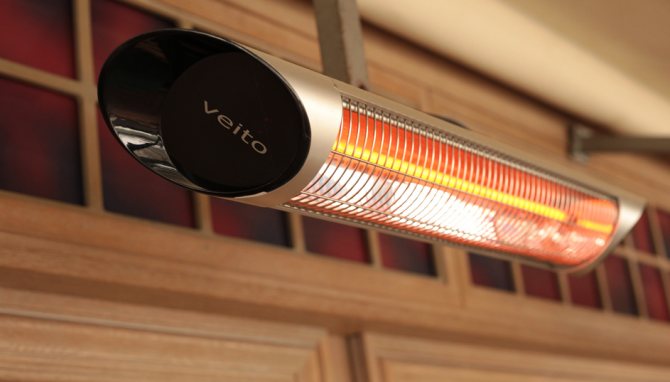

Here are some recommendations from experts in the field. These simple tips will tell you what to look for when choosing the perfect heater for your summer cottage.
It is necessary:
- Choose with what power the device will work.
- Decide on the operating mode not only throughout the whole year or a certain season, but also during the day. This will make it easier to save on application.
- Choose a type of heating element for the device, since this, first of all, will affect its ability to quickly warm up the room. And, in particular, on its strength.
- Decide on what kind of fuel the device will operate.


And the most important thing is to think carefully about where the heater will be installed. In particular, it must be installed at a distance of at least one meter from the presence of people.
Types of IR installations with a thermostat
Heating devices usually differ in their location, namely:
- Outdoor.


- Ceiling.

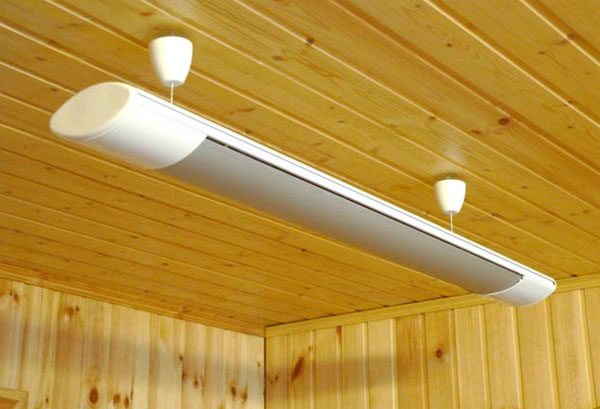
- Wall mounted.

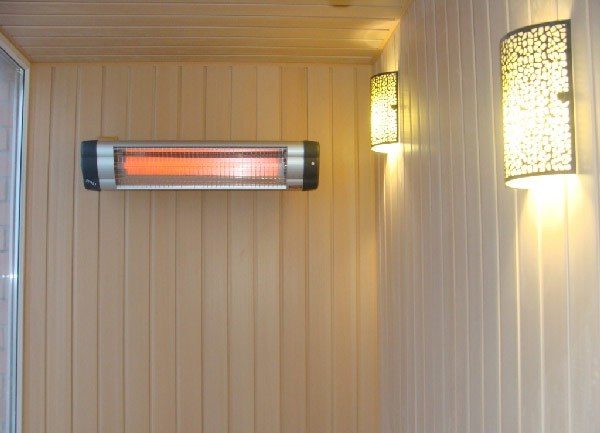
There are also IR film heaters, which are made in the form of:
- The panels are thin rectangular, with a flat surface, equipped with heating elements.
- Heat lamps with special reflectors and spiral heating elements.
- Polymer film with a thin layer of heating parts.
All film-type heaters are fixed to the ceiling or mounted in the floor.


Panel infrared heaters
Heaters also differ not only in shape (film, plate, spiral), but also in the material from which they are made. There are:
- Quartz devices, they use a tungsten filament sealed in a vacuum quartz tube or monolithic tile, consisting of quartz sand.
- Halogen plants using an inert gas as a source of infrared rays.
- Carbon heaters that use carbon fibers or wafers as a radiation source.
- Ceramic, which are composed of matching plates to distribute heat evenly.
How does an infrared heater with a thermostat work?
The action of an infrared heater is based on the fact that infrared rays affect furniture, as well as some building elements within the radiation limits. When voltage is applied to the infrared device, the heater begins to emit rays in the infrared range, which do not affect the air in any way, but "settle" on objects in the reach.


Under the influence of rays at the molecular level, the settled microparticles begin to move, and due to this, the surface temperature rises. Heating occurs. All the heat energy that is released by furniture and other parts that fall within the range is released into the indoor air.
Why do you need a thermostat
A thermostat in an IR heater, if you use it in the country, is a necessary thing, if not more necessary. In a simplified form, this is a thermometer that itself measures the temperature and brings it to the required indicators. For example, if you are in the house, you can set the temperature in the range of 20-22 degrees, and it will be maintained at this level automatically. If you are absent somewhere, then it is rational to lower the boundary indicator, up to +5 degrees, so that the house does not freeze through. Upon returning, it will not be difficult to raise the temperature to a comfortable level, since the room did not freeze.
Such a rational setting of the temperature regime will allow not only to have savings in payment for energy resources (gas or electricity), but also to create an optimal microclimate in a room with irregular living.
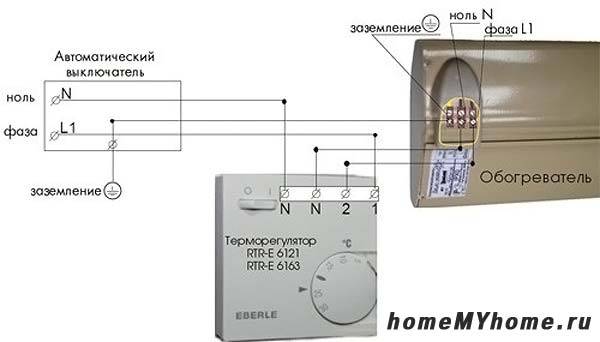

Connecting IR heaters through a thermostat


An example of a practical connection of a thermostat
How to make a DIY infrared heater for a garage
This method of organizing heating in a room will cost an order of magnitude cheaper than buying a ready-made appliance. It is available for every novice master. Stages of work
- Manufacturing of a heating element from a tungsten filament. To do this, it is screwed onto a steel bar, after which it is removed. The power of the device depends on the length of the resulting spiral, therefore it is determined empirically. Then its turns are wound on a heat-resistant material, for example, a piece of slate.
- Preparation of a heat-reflecting surface. As it can be used a sheet of aluminum, galvanized steel. It curves in a trough shape with a glossy surface inward.
- Assembly of elements. The spiral is attached to the brackets inside the deformed sheet. The frame of the structure is made of thick wire.
- Network connection. The ends of the tungsten filament are connected to a cable equipped with a plug. The correct operation of the device is being tested.
What devices with a thermostat are suitable for use in the country
Let's consider some of them in more detail:
- Ceiling infrared heaters, which are stationary devices. They come in the form of panels, films or lamps, similar in appearance to fluorescent ones.These devices can significantly save space, they warm up a fairly large area of the room well. Taking into account the difficult access to them, the devices are equipped with thermostats and remote controls.
- Wall-mounted IR devices are also of the stationary type. They sometimes differ a little more weight than ceiling options. They are made in the form of panels of various colors and shapes. Wall-mounted IR installations can be in the form of photographs, beautiful paintings, volumetric and relief drawings. They fit well into any interior, they can serve as decoration. Thermostats in these devices can be built-in or outside the device. It is advisable to place such devices higher, for better heating of the room and for safety reasons.
- Outdoor infrared heating portable devices. They can be carried anywhere in the room or home. Unlike previous types, floor heaters take up additional floor space. Made in the form of lamps or panels, they are completed with special stands in the form of tripods or stand legs for a stable position. Almost all floor units have built-in rollover sensors. But not all floor-standing models are equipped with thermostats.
Sources of
- https://ventilsystem.ru/klimaticheskaya-texnika/obogrevateli/infrakrasnye/nastennye/ik-obogrevateli.html
- https://www.tehnoprosto.ru/top-8-luchshie-infrakrasnye-obogrevateli-dlya-doma-i-dachi/
- https://Tehnika.expert/klimaticheskaya/obogrevatel/infrakrasnye-s-termoregulyatorom-dlya-dachi.html
- https://remont-system.ru/radiatory-i-obogrevateli/nastennye-infrakrasnye-obogrevateli
- https://ThermoMir.ru/doc/recomend/help_obogrevateli_2/obogrevateli_s_termodatchikom
- https://HomeMyHome.ru/infrakrasnye-obogrevateli-s-termoregulyatorom-dlya-dachi-luchshij-vybor-vremennogo-otopleniya.html
[collapse]
Types of energy saving garage heaters
The main function of the heating system in the garage slightly different from heating a dwelling. Firstly, heating is seasonal, the second difference is the low required temperature and the third difference is the absence of living organisms on a permanent basis.
Heater type selection must be produced with this specificity in mind. For example, heaters with a fan are not very appropriate in a living room due to noise and constant air flow in one direction, and in a garage they will be an excellent solution.
It should also be noted that for heating devices, the term "efficiency" only partially related to efficiency.
Efficiency of all electric heaters approximately the same and amounts to 98-99 percent. That is, all the electricity consumed by such a device is used to generate heat. But how this thermal energy is distributed throughout the room, in this case the garage, depends on the type of heater design. Consider the main types of energy-saving heaters.
Oil heater
Distinguish on floor, wall and table. The most common type is floor-standing mobile devices. Key Features:
- Great inertia. Such a heater heats up for a long time and, after turning off, gives off heat for a long time.
- Heats the air in the room, which then rises to the ceiling.
- If equipped with a fan, it is possible to partially redirect the air flow in the desired direction.
- Does not dry the air much.
- Safe to maintain.
When used in a garage, the advantage of an oil heater is excellent fire and electrical safety. The ability to adjust the temperature will also be useful.
If work is done regularly in the garage, an oil cooler is a great option for normal car storage. not the best choice... The reason for this is the constant heating of the entire room and, accordingly, the high consumption of electricity.
For a garage of 20 m2 power should be up to 2 kW, financial costs will be 96 rubles. per day. Hereinafter, the power of heating devices is indicated for use in a high-quality insulated garage with a temperature difference between the outside and inside air of 50 degrees.
Fan heater
It is a device in which electric heating elements heat the air moving from the fan. Features of the:
- Quick start-up, after a couple of minutes the device reaches the set power and temperature of the supplied air.
- Has a directional air flow, which is very convenient for use in the garage.
- Has a high fire hazard. Not recommended to be left unattended.
Heat gun - the best way for use in the garage as an additional source of local heating. 24/7 use is not recommended due to the high risk of fire.
For use as the main source of space heating during work in a garage of 20 m2 requires a fan heater with a power of 2 kW, operating around the clock, which will be 48 kW per day or 96 rubles. in monetary terms.
If you use this heater as a local source heat to warm up the car engine, for example, every morning for an hour, then the costs will be 4 rubles for warming up.
Convector heater
The convector heater has a number of features:
- Quick inclusion in heating work.
- Provides air convection from the cold floor to the ceiling.
- Keeps the set temperature perfectly.
- Uses air as a heat carrier.
- Safe to use.
Like an oil heater, a convector - this is a great solution for heating the garage, if there is a need to stay there for a long time.
A small room like a garage will warm up almost evenly, and high fire safety allows you to leave it on for many hours.
Using will constantly require about the same amount of electricity - 48 kW per day or 96 rubles.
Electric fireplace
Electric fireplaces, although they look interesting, work on the principle of the same fan heater. The characteristics are as follows:
- Unusual appearance for lovers of interesting surroundings.
- Stationary location. In this regard, limited use for any work in the garage.
- The principle of operation is identical to the fan heater.
When using an electric fireplace to heat the garage power consumption will be the same as in the case of a heat gun - 96 r per day.
Infrared heater
Can be wall, floor or ceiling. Most popular solution for heating the garage, thanks to some features:
- Heats objects and surfaces in the room using infrared radiation.
- Affects separate areas in front of you.
- Safe to use.
- Compactness.
The main plus it is when such a heater is used in a garage that it can be fixed precisely over the place where the car is parked.
Wherein infrared raysgetting on its surface, they will transfer energy directly, without using an intermediate heat carrier in the form of air.
The rest of the space will be receive heat energy indirectly, from a heated car. Thanks to this, it is possible to use an infrared heater with a capacity of 1 kW to warm up the car, which in terms of finance will amount to 48 rubles. per day.
Should be considered, that in order to fully heat the garage room to perform some work in it, it is necessary to use heaters with a total power of the same 2 kW.
When using infrared heaters in the garage as a heating source, it is recommended to install them in the amount of two or three units, each with a capacity of 600-800 watts. For regular car storage it is enough to turn on one, to use full power to carry out the work.
Inverter heater
Fundamentally different from other heaters by the absence of heating elements. It is a device that, according to its principle of operation, is very similar to an air conditioner.At the same time, it works the other way around. That is, in the inner block, air is compressed with the release of heat, and in the outer block, it expands and the release of cold.
Has a number of features:
- Has a fairly high cost.
- It is used at outdoor temperatures up to -20 C.
- Completely stationary.
- Safe and completely autonomous in operation.
Inverter heater - not the best solution for the garage.
Effective work possible only with light frosts in the off-season. When the outside temperature drops to -5 C, the efficiency drops sharply and the use of such a system does not make sense in economic terms.
Ceramic panel
The device is a wall panel made with a "pie" from several modern materials. Key Features:
- Compactness. It has a thickness of several centimeters, which is a significant plus for a garage.
- It emits both thermal and infrared radiation, while heating both the air and objects around it.
- Safe to use. Completely autonomous, the recommended operating mode is around the clock.
This type of heater - innovation in heating systems... Due to its excellent performance characteristics, and especially the presence of infrared radiation, it is excellent for use in the garage. When used as the main source of heating during continuous operation, it consumes 2 kW of electricity per hour for a garage with an area of 20 m2, which is 96 rubles. in economic terms.

